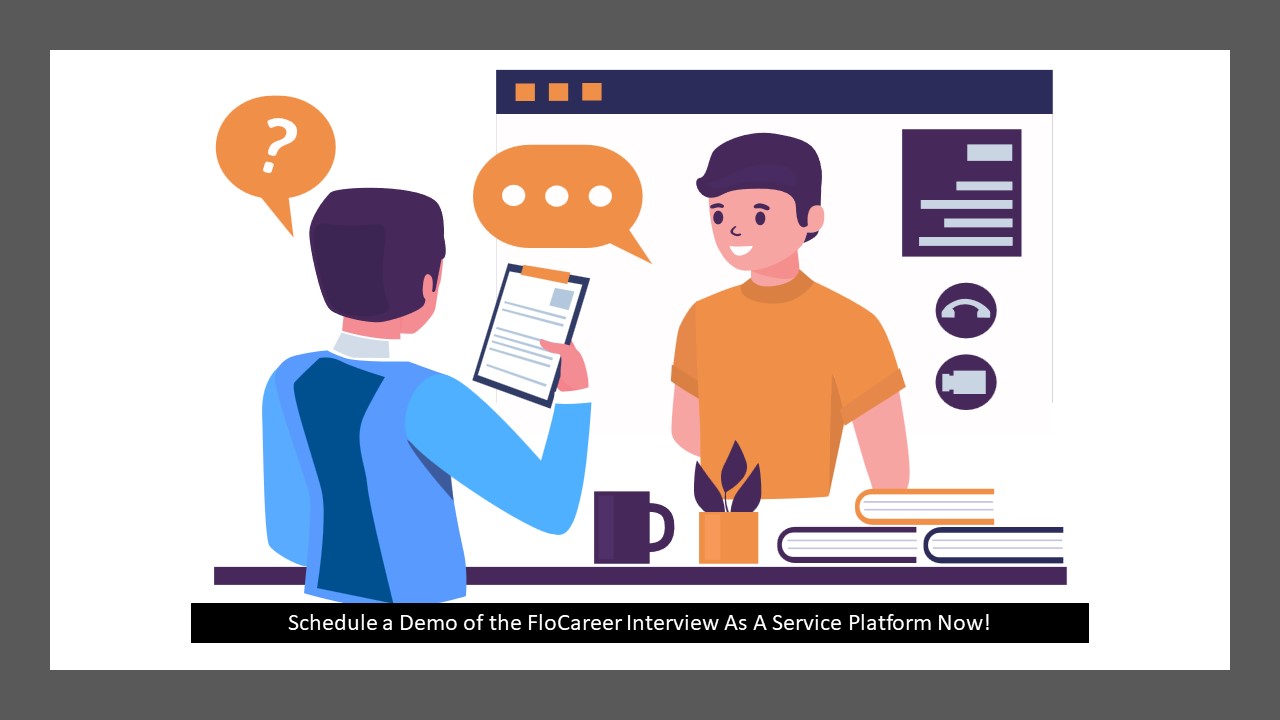81% of people lie during a job interview, shares Ron Friedman, author of The Best Place to Work and a lauded social psychologist. Of course, these may not be egregious lies, more like embellishments of the truth. Yet, it’s a reflection of how general interviews don’t represent a true picture of the candidate’s skills and ability to succeed at the job.
Unfortunately, it is precisely these kinds of interviews that form the bedrock of campus recruiting. While this traditional means of connecting young college graduates to gainful employment has undergone systemic shifts due to the Covid-19 pandemic, it was rife with problems, to begin with.
Why On-campus Recruiting was Broken Pre Pandemic
Credit: https://pixabay.com/images/id-1400313/
Come recruiting season pre-2020, and you would find human resources teams of large corporations on the road, traveling from college to college, racking up expenses when it came to accommodation and meals. Besides the cost of travel for the team, companies also bore the expense of setting up booths at career fairs and organizing candidate events. Moreover, employees from other departments besides human resources would often be roped into on-campus recruiting at strategic colleges to better assess candidates who might work with them in the future. This represented a huge opportunity cost for the companies as these employees would take significant time away from their core functions to play this role. Combine these expenses with the cost of employee attrition – 55% of all recent college graduates leave within their first year at a job – and you have a very expensive proposition even for corporations with deep pockets.
On-campus recruiters were also charged with moving the deluge of candidates down the hiring funnel quickly, often in a matter of days. This meant screening and shortlisting job-seekers in a compressed amount of time, for which they naturally relied on the tried and tested formula of general interviews and networking events. The problem with such methods, however, is that they benefit the extroverts, those with the social capital to ‘work the room.’ While interpersonal skills are beneficial for most jobs, these methods don’t test for actual job-related capabilities and unfairly filter out candidates who may be great assets simply because they struggle with making small talk.
On-campus recruiting was also always seasonal and limited by geography. Corporates elect to recruit at schools accessible to them, often based on their proximity to large metropolitan areas. Recruiting in-person at faraway colleges is simply not an option due to the cost incurred. “Talent is evenly distributed but opportunity is not,” as early talent skilling platform Forage observes, and opening up opportunities for employment to only a few select colleges through on-campus recruiting means that companies are missing out on myriad talent pools – those that are physically distant as well as those that didn’t attend college but may be skilled through alternative means. Colleges are also known to disproportionately admit higher income and racially homogenous populations. Focusing hiring efforts solely on colleges through on-campus recruiting doesn’t help companies score high on the Diversity & Inclusion (D&I) scale, which is an important contributor to their success.
The Covid-19 Pandemic Accelerated the Shift toward Virtual Recruitment
Using technology to streamline the hiring process is not a new phenomenon. Applicants no longer fill out paper applications; they email their resumes and cover letters. Job postings have moved from physical bulletin boards in colleges and cafes to online job boards without space restrictions. Technology is an integral part of the recruiting process, but its integration is, at best, superficial.
However, as the Covid-19 pandemic shut down campuses overnight and we all moved to video interviews, on-campus recruiting tried to metamorphose into virtual career fairs, but with little success. Data from the National Association of Colleges and Employers (NACE) from the Fall of 2020 indicated that 71% of respondents found student attendance at virtual career fairs to be worse than in-person. Clearly, in-person-campus recruiting did not transition very well to an online model, and employers were left scrambling to figure out how best to continue remote talent acquisition efforts in a world that had suddenly turned virtual.
The Talview Global Remote Hiring Trends Survey conducted in December 2020 surveyed 145 organizations across 20 countries and 15 industries, including Amazon, Red Bull, Uber, Kellogg, and Disney, to find answers to these very questions. They found that 80% of respondents had shifted to using remote methods for interviewing and hiring. This encompassed not only pre-screening efforts but also final interviews and even online events. Interestingly, they also discovered that 79% of respondents were in favor of virtual recruitment – they believed that remote hiring could improve diversity in their companies, and not being bound by proximity to applicants helped them access better talent. A similar percentage of respondents strongly believed that virtual recruiting was here to stay even post-pandemic.
Just as other industries have been transformed with the forced use of technology triggered by Covid-19, recruiting will also never be the same. This begs the question – at what point in the hiring funnel is technology best employed for optimal results? In a future where hiring will continue virtually all year round and not just on-campus once a year, what best practices should recruiters follow for superlative outcomes?
The Future is Hybrid
On-campus recruiting may never be a relic of the past but there is no doubt that better use of technology will help companies reduce reliance on in-person events. Follow these six recommendations to successfully navigate your remote talent acquisition efforts.
1) Use Virtual Interviews as a Screening Tool:
On-campus interviews are a slow, cumbersome, and seasonal process. Interview candidates all year long in all geographical areas of interest by effectively using virtual interview tools.
Our team of 3,000+ FloExperts are ready to help you close your positions faster than ever before. The interviewers have completed over 300,000+ interviews using a structured guide that eliminates any hiring biases.
Credit: https://unsplash.com/photos/1LyBcHrH4J8
2) Use Virtual Tools to Test Skills:
Technology can also be used effectively further down the recruitment funnel. Once you have a shortlist of pre-screened candidates, you can assess the skills required for the job through remotely proctored skill-based tests that involve scenario-based questions and coding challenges for technical jobs, such as FloCareer’s On Demand Interviews product. FloCareer’s JD to CV match solution uses a skill matrix to provide a percentage based matching score after comparing a candidate’s resume with the job description. Our army of freelance technical recruiters, equipped with deep expertise in their fields, can also speedily assess a candidate’s skills virtually.
3) Shortlist Candidates Virtually Before On-campus Recruitment Visits:
Campus recruitment would traditionally be used at the start of the hiring funnel to narrow down the list of quality applicants. Using technology to pre-screen candidates in the weeks leading up to on-campus recruitment efforts can move worthy applicants further down the hiring funnel before recruiters even meet them. This virtual filtering effort also allows recruiters to optimally plan out their college tours.
Recruiters can then better use their limited time on-campus to conduct niche events with focused groups and meet with stellar candidates they have already identified as having the relevant background and skills for the job. They can also use their on-campus time to organize live project days or time-bound, team-based challenges to assess students’ soft skills like problem-solving and decision-making and understand their appetite for collaboration and teamwork.
4) Use Micro Internships and Skill-Based Projects to Assess Real Skills:
Micro-internships offer students an opportunity to work with a company’s teams on live projects that showcase their skills while giving them a taste of the company’s culture and working style. These are similar to job auditions that are beginning to find favor with companies interested in seeing candidates work live with their teams to better assess both skills and culture fit. In a world used to remote work post pandemic, these types of projects can easily be conducted virtually.
When students are primed in advance through interaction with the company around projects, on-campus recruiting is not wasted on ‘getting to know you’ conversations but gets down to brass tacks. Recruiters can then focus on ‘closing the deal’ in-person with students whose already demonstrated capabilities are a match for the company.
5) Don’t Limit Company Branding to In-Person Events:
Companies have traditionally used on-campus events and career fairs to decorate their booths with posters branded with company colors and to distribute company swag – promotional merchandise like pens, t-shirts, keychains, and other freebies. However, with the advent of advanced recruitment technology, companies no longer have to rely on in-person events for branding. Technology tools can be customized in myriad ways to give applicants the feel of the company’s culture and values in a cost-effective manner. Additionally, an effective social media strategy can give potential recruits a sense of the company’s culture.
6) Employ Data-Driven Tracking Tools:
On-campus recruiting has often involved a swath of paperwork – hard copy resumes students drop off at career fairs and physical notes and checklists recruiters use while interviewing candidates in-person. It’s hard for companies to keep track of the yield of their recruitment efforts to plan better for the following year. Using our interview as a service platform with 3,000+ FloExperts will generate data-intensive reports and analytics, and can help effectively structure and manage an overwhelming process while offering insights on robust applicant sourcing channels and reducing average hiring turnaround times.
In the world of recruiting, both virtual tools as well as in-person events have their unique benefits and will continue to be integral to the hiring process. The future of on-campus recruiting, in particular, is tech-enabled, data-driven, and skill-based. By using technology to their advantage, companies can transform age-old in-person recruiting methods to better suit their mandates and zero in on applicants whose skills more closely match the job description and whose values overlap with your culture.
At FloCareer, we adopt a technology + human approach to eliminate systemic hiring biases and ensure your firm is finding the best talent who’s values align with that of your organization.



